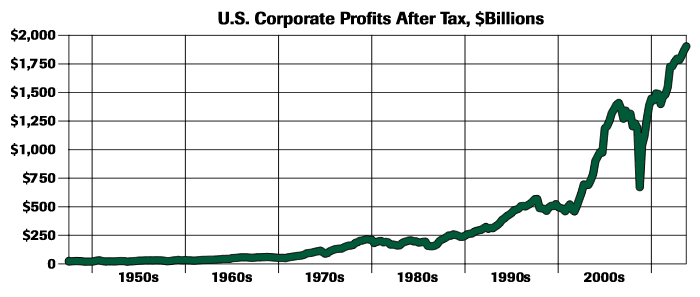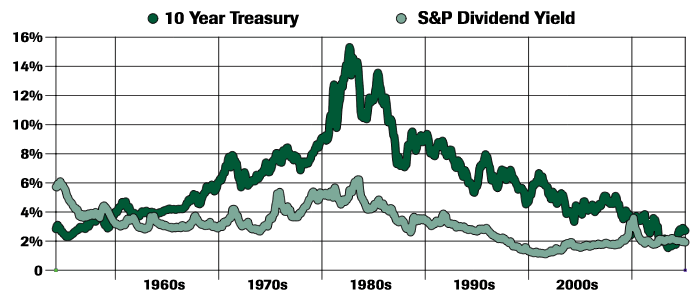2014 Q1 | Trade Winds Pick Up, Economies Gain Speed
 The financial markets struggled in the first quarter of 2014, but despite several challenges, managed to reach new all-time highs and also experienced a period of relatively stable interest rates. The actual results were as follows:
The financial markets struggled in the first quarter of 2014, but despite several challenges, managed to reach new all-time highs and also experienced a period of relatively stable interest rates. The actual results were as follows:
S&P 500 +1.8%
Dow Jones -0.1%.
10-Year Treasury +3%
Russell 2000 +1.1%
These results were all the more surprising against the backdrop of adverse weather conditions in North America, continued problems with the rollout of Obamacare, and the seizure of a large part of Ukraine by a re-energized Russia lead by Vladimir Putin. Finally, there was the mysterious disappearance of Malaysian Airlines flight 370 on the morning of March 8th. In a strange way, the missing airplane brought many nations together, including China, the U.S., the U.K., Australia, and India, in a determined search for the plane. How nice to have so many world powers working towards a common objective, which if successful would represent a cooperative global achievement.
Back in the United States, the consensus forecast for economic growth is a 2% to 2.5% increase for the first quarter of 2014. This would represent a continuation of the subpar recovery from the Great Recession of 2008 and 2009. In fact, recent economic results may have begun to define a “new normal” for U.S. growth of 2% to 2.5%, down from 4% to 5% in the post-World War II era. This change is more significant when projected across a $17 trillion economy. Each 1% difference equates to $170 billion annually, larger than many of the world’s economies.
Yet our recovery continues and inflation rates are under 2%, below the historic average of 3.6%, well under the Fed’s target rate, and in our opinion, unlikely to accelerate any time soon. The unemployment rate is now just above 6.5%, within the Federal Reserve’s acceptable range, and for the moment seems to be trending stable to downward. It is likely that the weather conditions in the first quarter hindered improvement in this area. The weather was also responsible for a lowering of first quarter growth expectations, but we feel that this is merely demand that will be deferred to the remaining three quarters of the year, which will give a lift to future results. There was considerable strength in the North American energy sector as continued growth in oil production, now over 8.2 million barrels per day, is the highest in over twenty-five years. Lastly, housing and auto sales remained reasonably strong in the quarter, pointing to a strong second half.
Importantly, we see a continued favorable outlook for profits in 2014. As the accompanying chart shows, corporate profits are at an all time high, not only in dollars reported, but also as a percentage of revenues, which is good news for share prices. Another favorable development in the quarter is the general recognition that European economies, particularly the hard hit southern European nations (France, Spain, Italy), have entered a sustainable economic recovery. All of these factors support higher price-to-earnings multipliers that could range between 16x and 18x earnings, suggesting that the Dow Jones Industrial Average could exceed 18,000 within eighteen months.

The current economic and geopolitical conditions remind me of my childhood years in the 1950s. Economic growth was stable, and interest rates and inflation rates were low at 2% to 4%. Then as now, mortgage rates were 4% for a twenty-five year mortgage, and 2% Treasury bill rates were the norm throughout the ‘50s. Corporate profits were advancing in most years and the stock market followed, with the Dow rising from 235 in the beginning of 1950 and closing the decade at 615.
In the early 1950s, investors that were starved for income turned to common stocks, as 4% yields on common stocks were equal to or higher than the 10-year Treasuries. As the accompanying chart (back page) shows, this relationship was to change in 1958 when the 10-year Treasury yield rose to 3.86% while yields on common stocks declined to 3.27%. Yields on common stock continued to trail 10-year Treasury yields until 2008. The relationship between common stocks’ yield and the 10-year Treasury once again reversed in June of 2013. Today, we believe investors are again turning to stocks to replace bonds in order to maintain or even improve yields. Our firm embraces this investment income strategy and we are using high-yielding common stocks to replace maturing bonds that paid high interest rates. Doing so has resulted in some of our investment asset allocations tilting toward the upper end of the allowable range for common stocks and reducing the bond allocation to their minimum levels.
[blockquote4 align=”left|center|right” textalign=”left|center|right” width=”30%”]Recent economic results may have begun to define a “new normal” for U.S. growth.[/blockquote4]Stock market cycles generally end in speculative stock activity, often accompanied by an increase in initial public offerings (IPOs). The most recent example of excessive speculation was the tech bubble of the late ‘90s. During that cycle, unproven companies, often without earnings and sometimes without sales, were afforded market values in the billions without any underlying justification. Recently, we have seen an increase in the number of companies being offered to the public for the first time. The recent unsuccessful IPO of the mobile game company King Digital Entertainment (developer of Candy Crush) may cool investor appetites for new issues, a positive development. Since the 2009 lows, common stocks have more than doubled and the recent uptick in IPO activity should be monitored carefully to ensure that the caliber of offerings meet minimum investment standards.
In March, Russian President Putin seized control of Crimea, prompting concerns of a return of the Cold War of the 1950s and 1960s. Fifty years ago, a boisterous Soviet Premier, Nikita Khrushchev, rattled his nuclear sabers and missiles in an awfully frightening manner including shoe-pounding displays at the United Nations and repeated suggestions of imminent “thermonuclear war.” It was disturbing for the children of that era, including me. But, wars are won by economic might, as demonstrated by the massive U.S. production effort in World War II that effectively overwhelmed Japan and Germany’s capacity to sustain the wars that they began.
In 1961, in the middle of the Cold War, the U.S. economy as measured by gross domestic product was $581 billion. The USSR’s total economy was $105 billion, one sixth of that of the United States. A year later in October of 1962, the Soviet Union challenged the U.S. by placing offensive missiles in Cuba, creating a nuclear confrontation and prompting the U.S. to demand removal of the missiles. Confronted with overwhelming military superiority, Khrushchev faced almost certain annihilation and retreated. For nearly two decades, Soviet leadership raced to build an enormous strategic military capacity, which placed incredible burdens on their much smaller economy such that it collapsed in 1989.
[blockquote4 align=”left|center|right” textalign=”left|center|right” width=”30%”]Today, we believe investors are again turning to stocks to replace bonds in order to maintain or even improve yields.[/blockquote4]Today, the U.S. gross domestic product is approximately $17 trillion compared to the Russian GDP of $2 trillion. The degree of economic disparity has changed little since 1960, and a new Cold War would eventually harm the living standards of the Russian people and threaten not only Putin’s expansionist geopolitical ambitions, but also his ability to govern. We need only patience and healthy economic growth to avoid another the economically induced collapse.
Another important development also in the quarter: Janet Yellen took office as the first female Federal Reserve Chairman. She is off to a fine start and for now, the press and financial markets have been impressed with her performance. One in the win column for Obama. Yet another bright spot is the apparent upturn of the European economies, as interest rates throughout western Europe have fallen from 5%-7% in 2012 to below 4% currently. This has stimulated a burst of economic activity in Europe and should be good for a positive in 2014 and beyond.

Inflation remains below Chairman Yellen’s target rate of 2% and the outlook appears to be positive when examining the components of cost of goods sold: raw materials costs, labor costs, and capital costs. Raw materials, as measured by the IMF’s Commodity Price Indices, were essentially flat in the quarter because Chinese manufacturing slowed sharply. Unit labor costs, a proxy for the Consumer Price Index, were also unchanged as many workers have moved to the sidelines and ceased looking for work. Supplies of labor are ample enough to support further economic growth. Demand for capital in terms of commercial bank loans continues to be sluggish and banks are continuing to offer credit at very low rates, but with very high credit standards. The U.S. economy today appears to have the best prospects of any of the major global economies. There are green shoots foretelling that demand for employment should be picking up this spring and we should be gaining back some of the lost sales due to the bad weather. The preconditions for a strong expansion for the balance of 2014 are falling into place.
[blockquote4 align=”left|center|right” textalign=”left|center|right” width=”30%”]There are green shoots foretelling that demand for employment should be picking up this spring and we should be gaining back some of the lost sales due to the bad weather.[/blockquote4]At the turn of the century, our economy was actually enjoying significant federal budget surpluses. These were brought about by tremendous productivity gains that resulted from a huge surge in information and communication technologies, sometimes known as the tech boom. In the new book by MIT professor Erik Brynjolfsson, The Second Machine Age: Work, Progress, and Prosperity in a Time of Brilliant Technologies, the author sees a new robotically-driven machine age yielding incredibly significant productivity gains. The enormous financial implications of these efficiency gains could result in a massive surge in tax revenues. These revenues would enable a return to record budget surpluses and a new golden economic age. Creativity and ingenuity have always been the hallmark of our economy and has enabled this nation to create a standard of living that is the envy of the world. To those that believe our nation’s best days are behind us, I respectfully disagree.
Our forecast: economic winds picking up, get ready to deploy the spinnaker.



